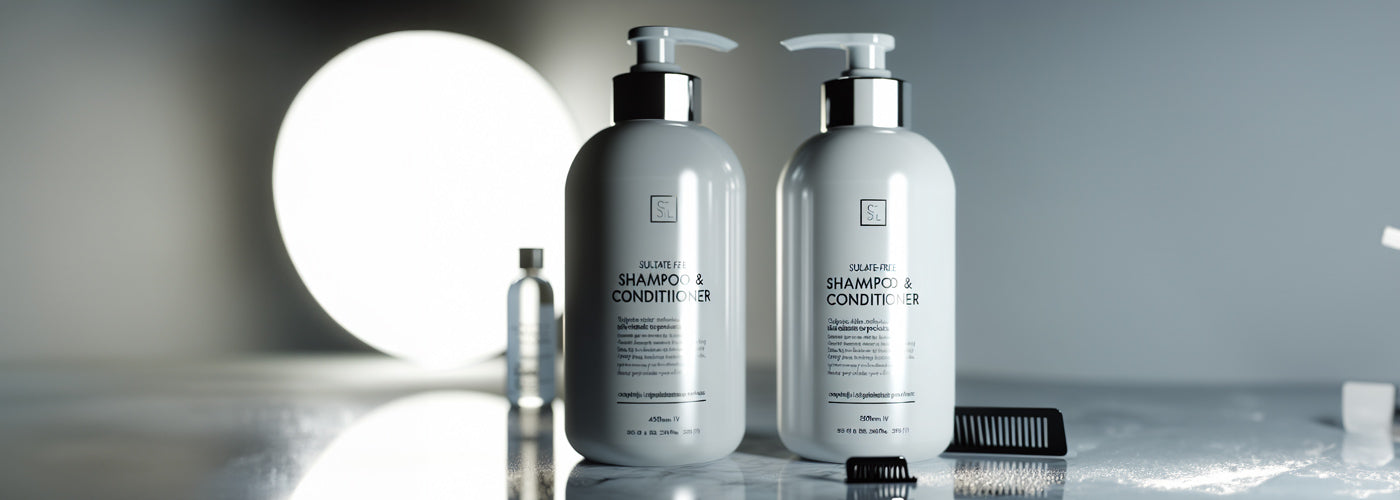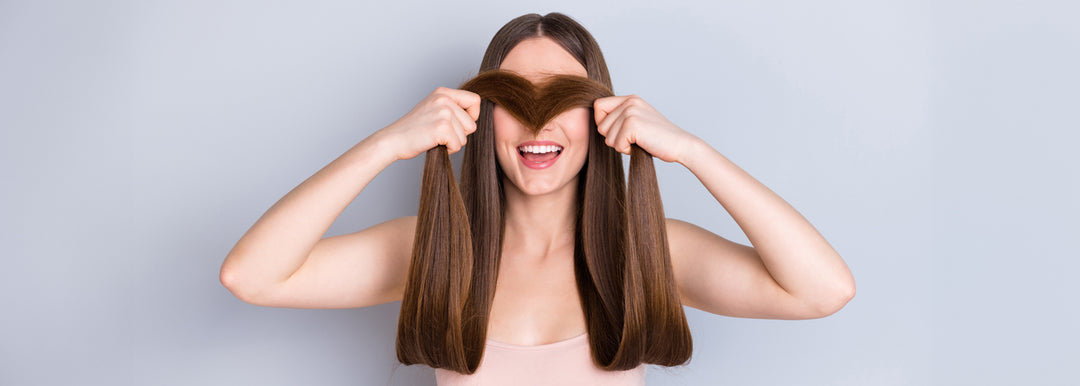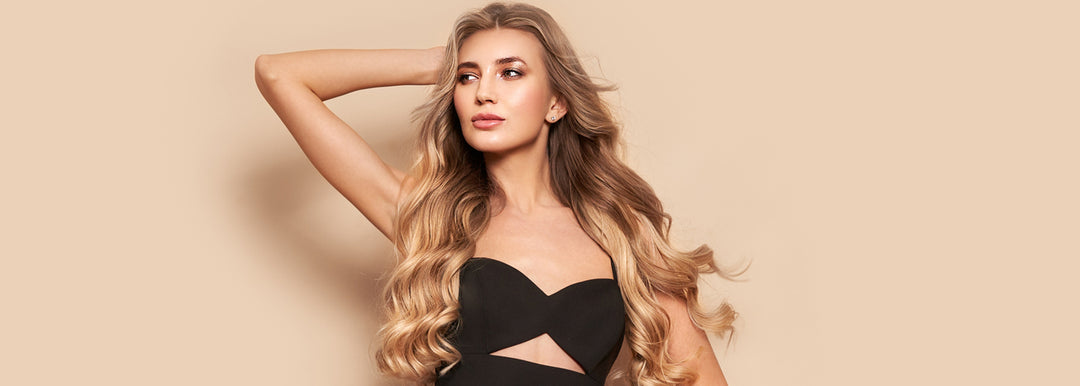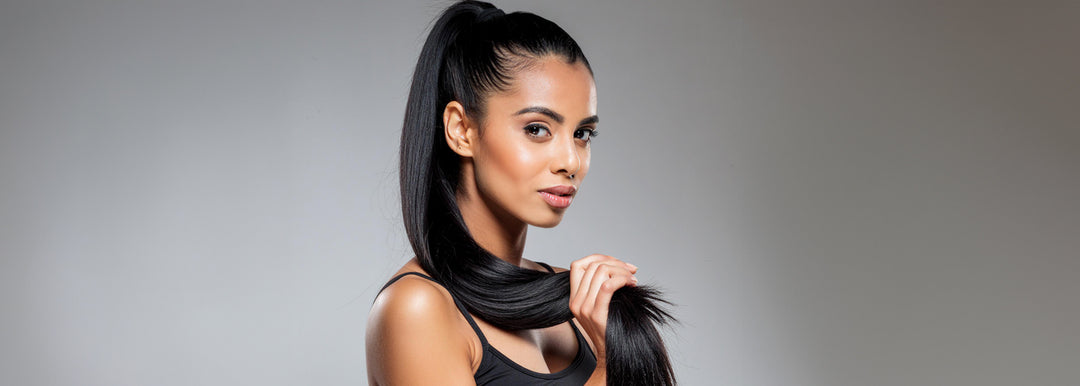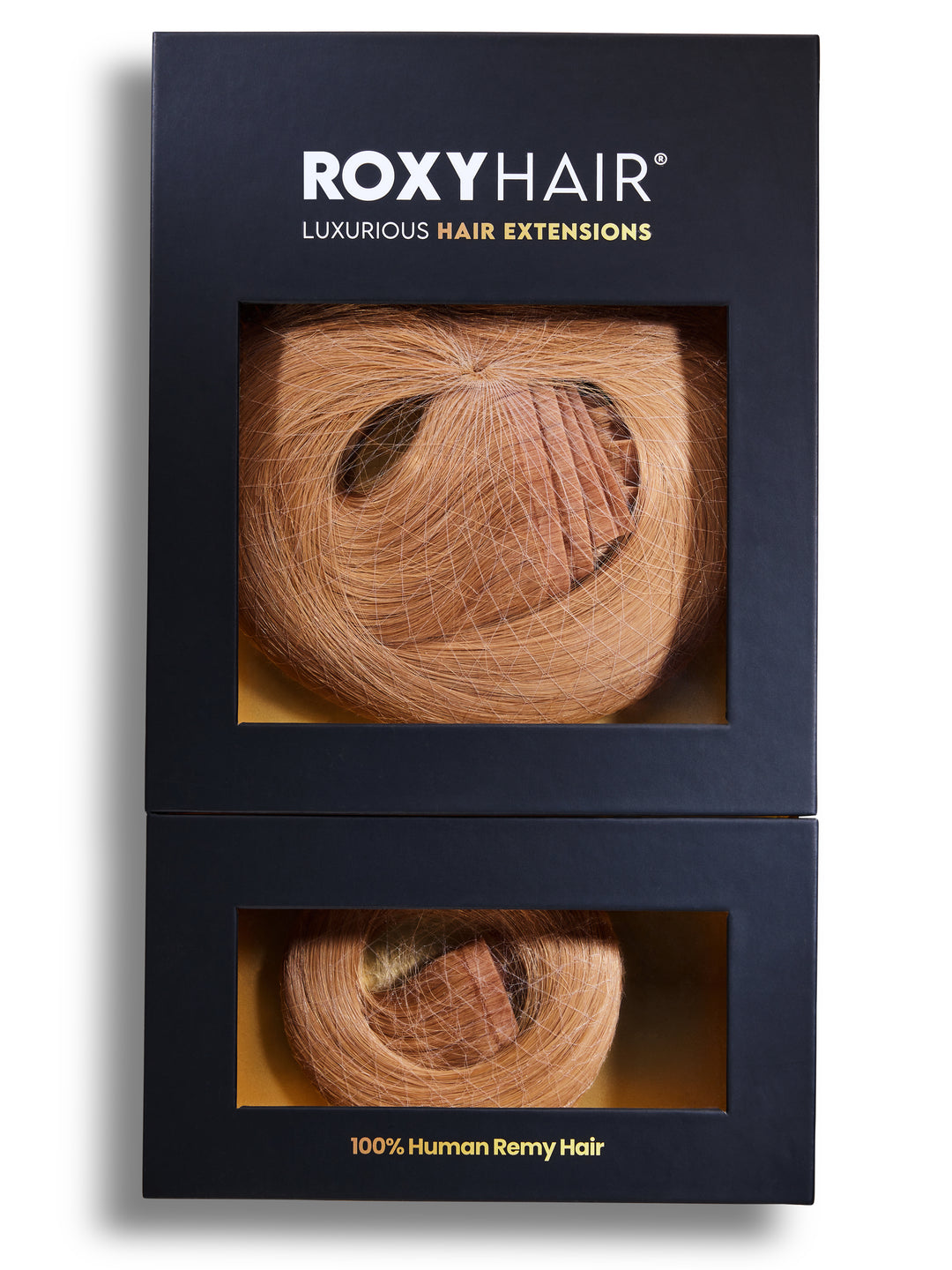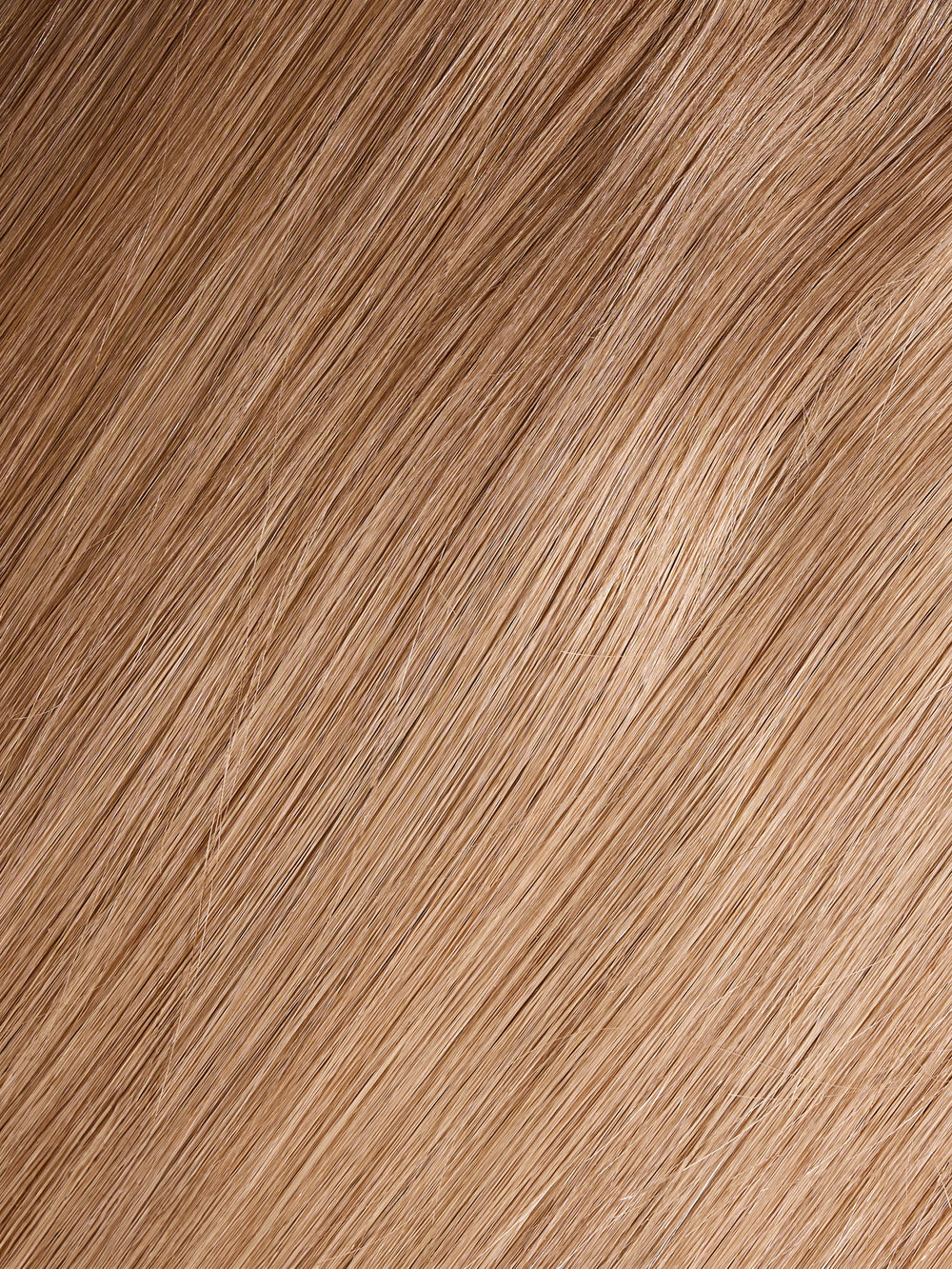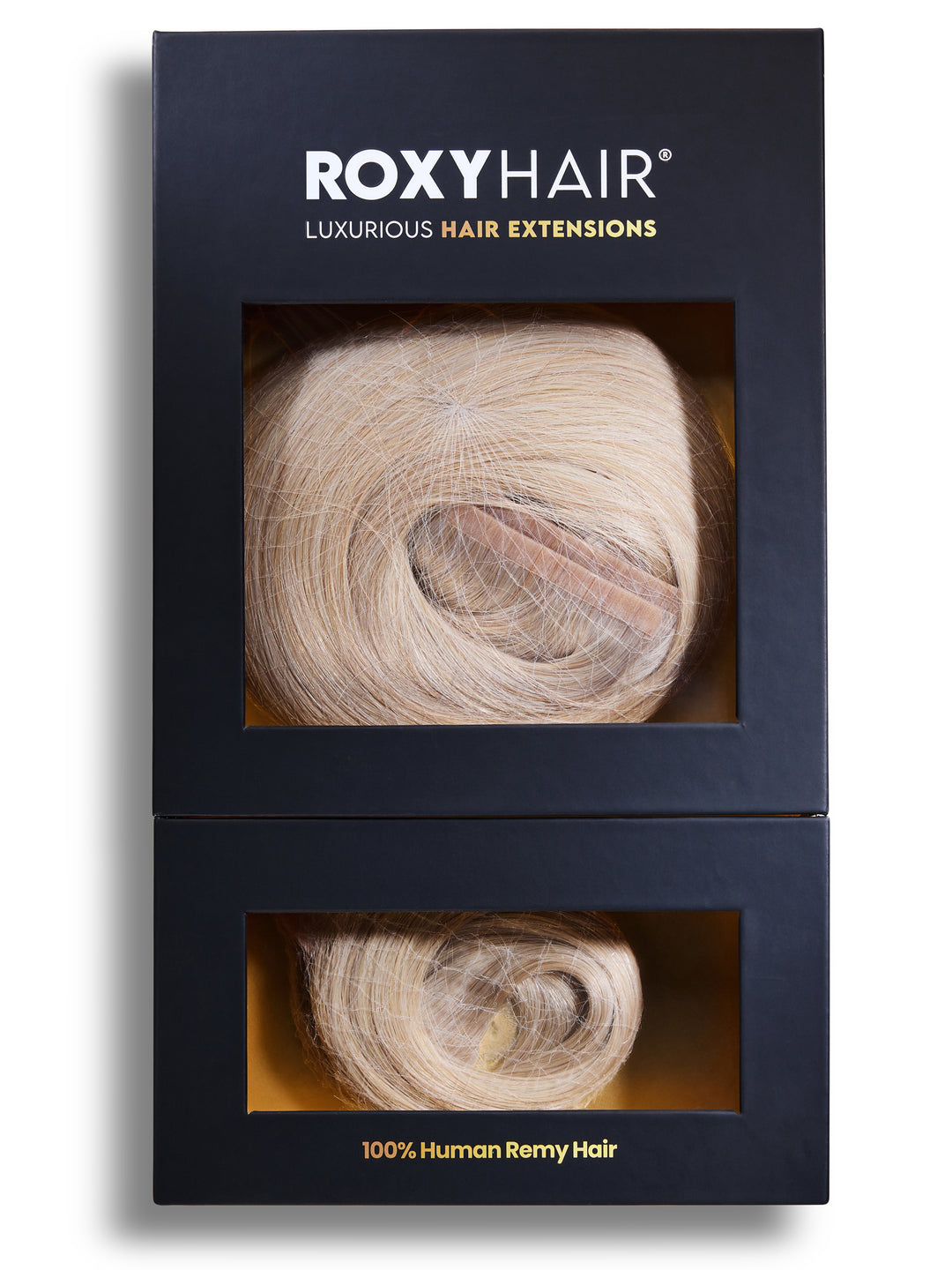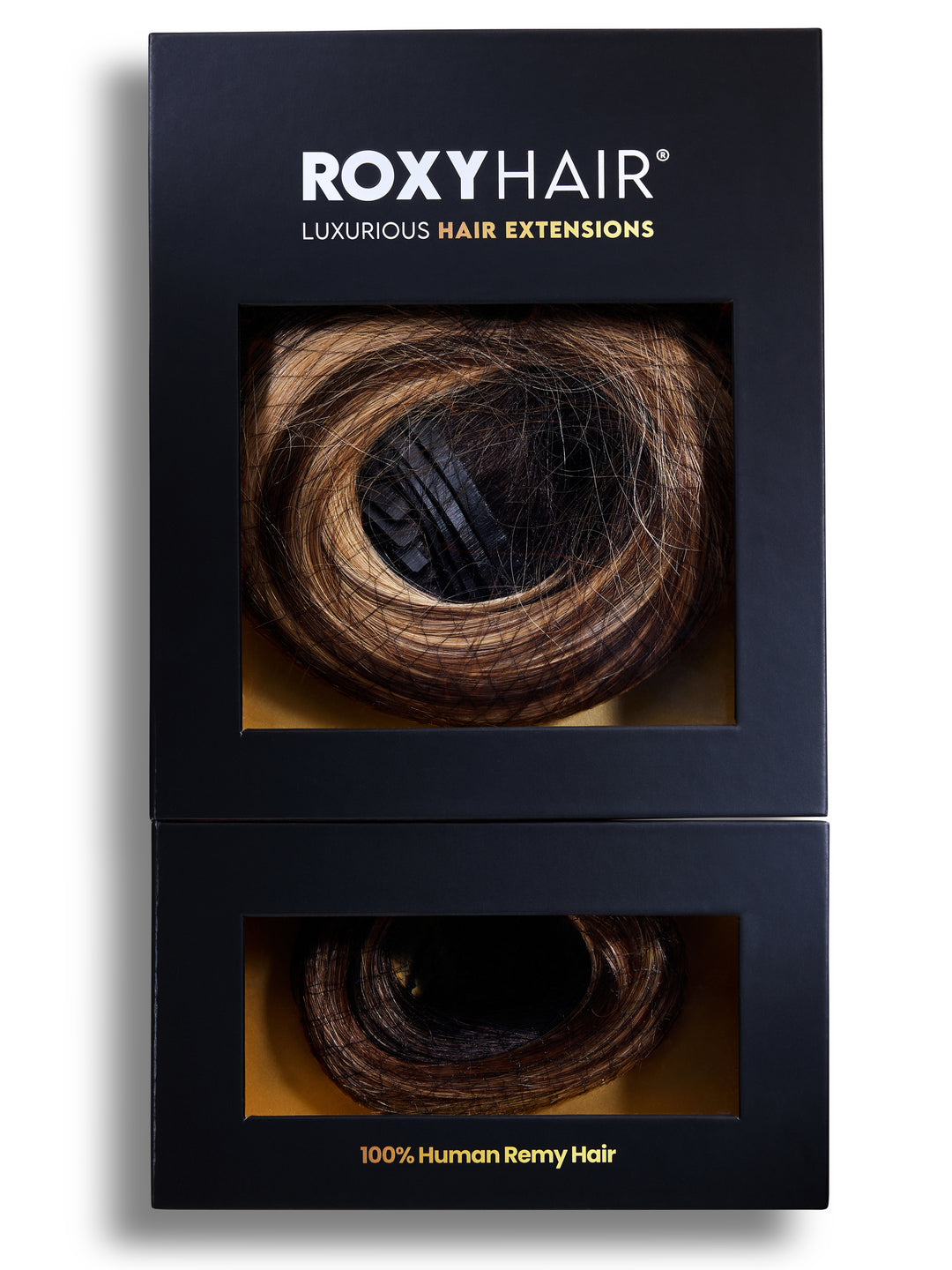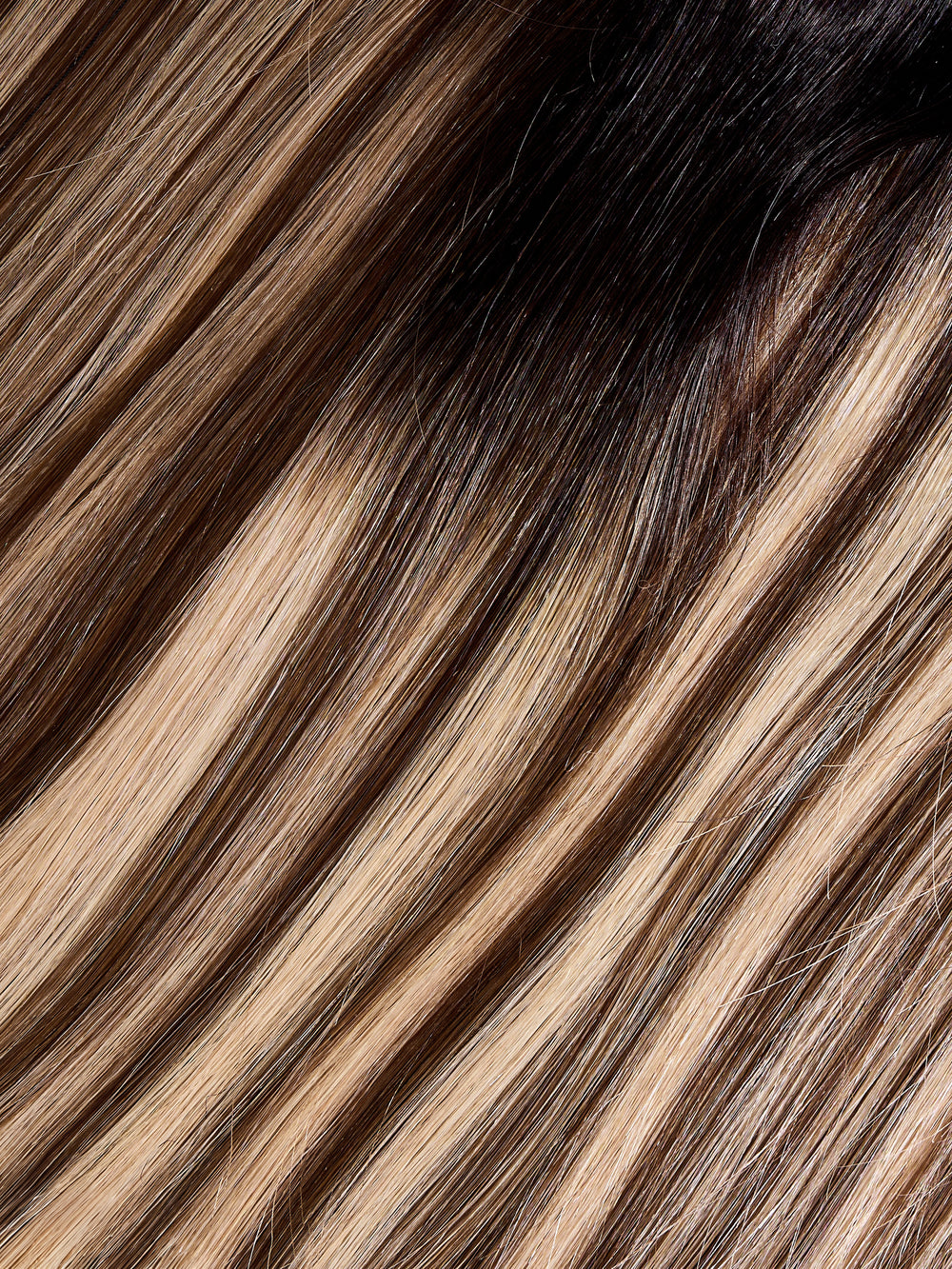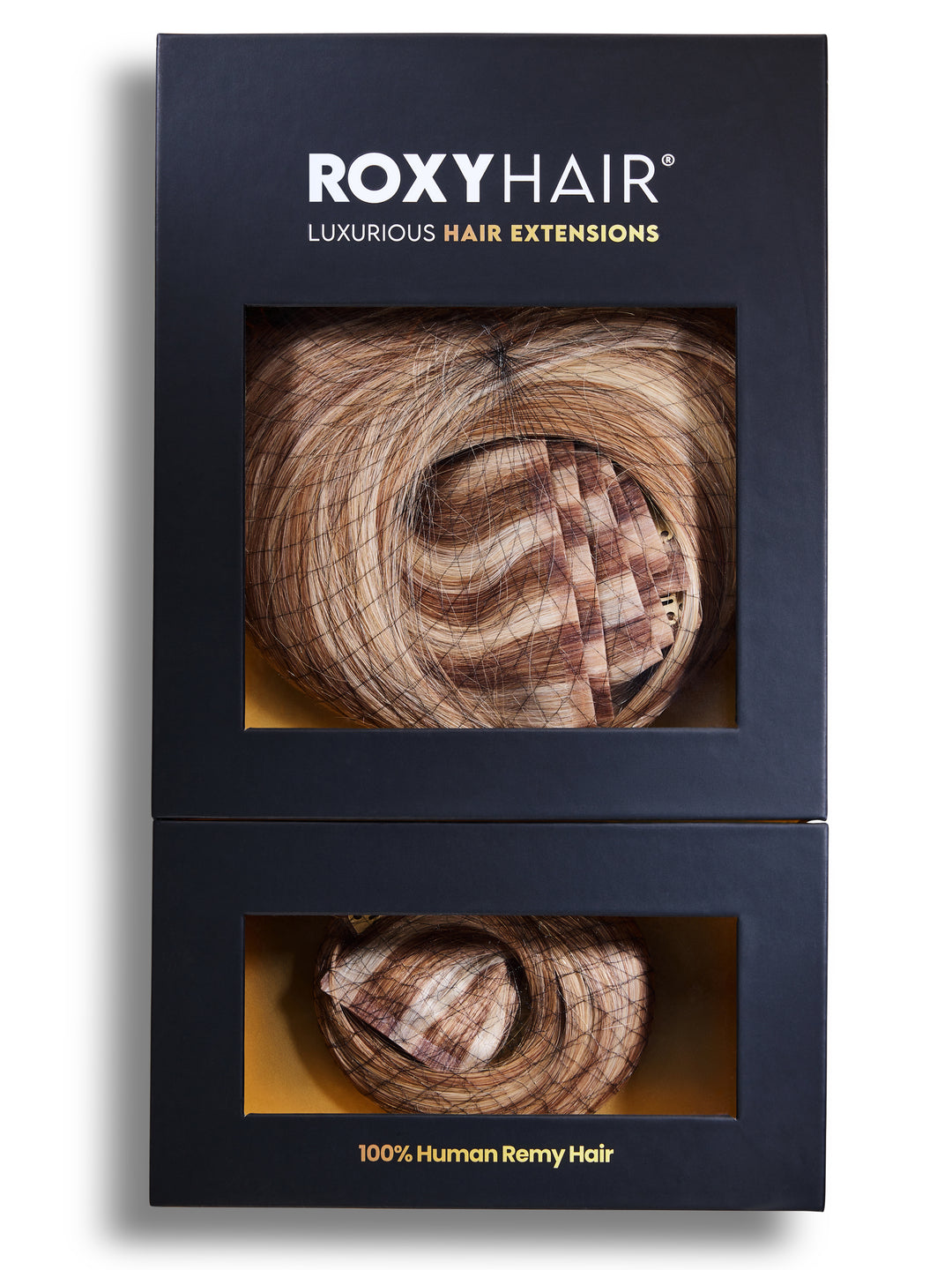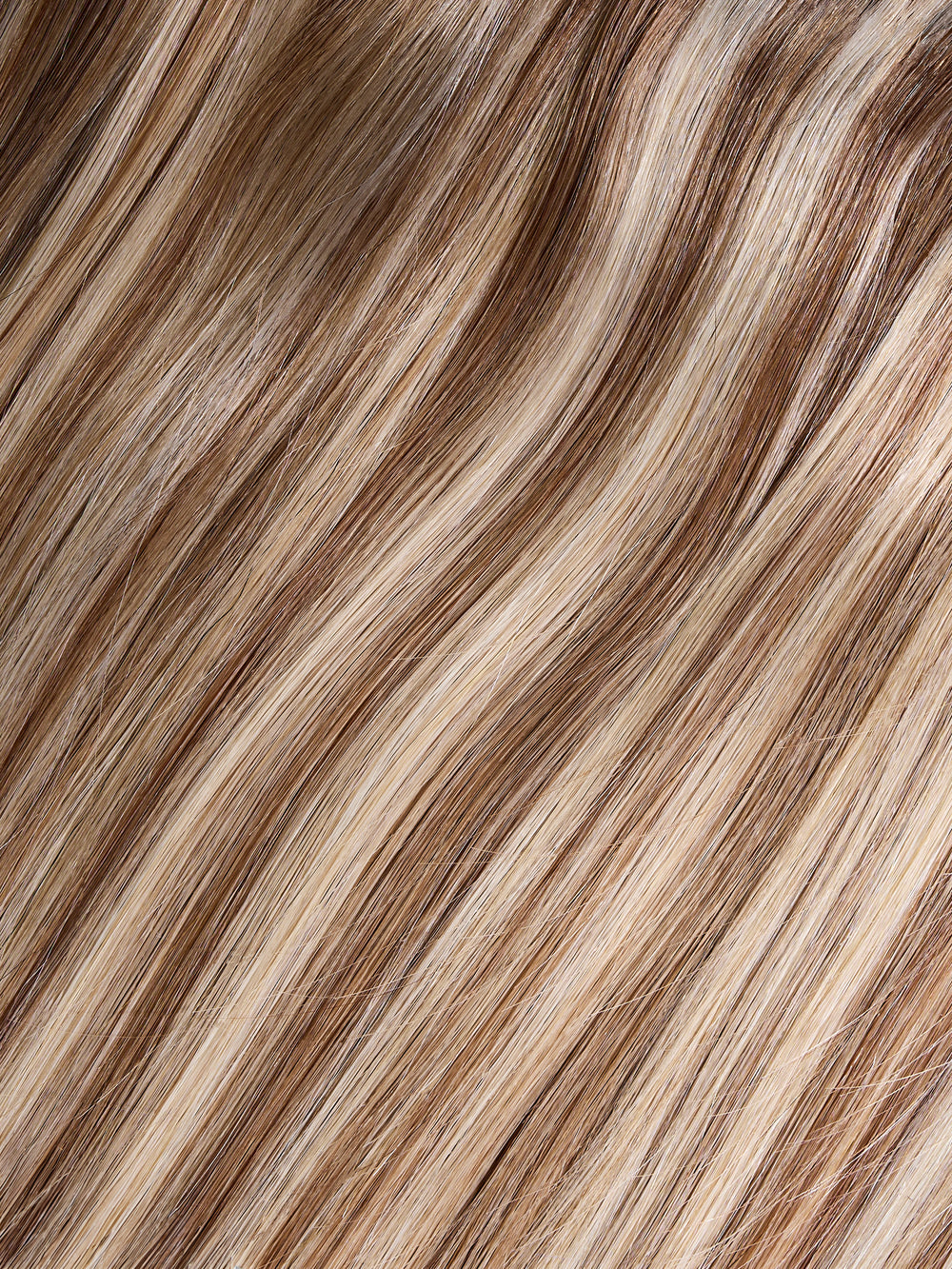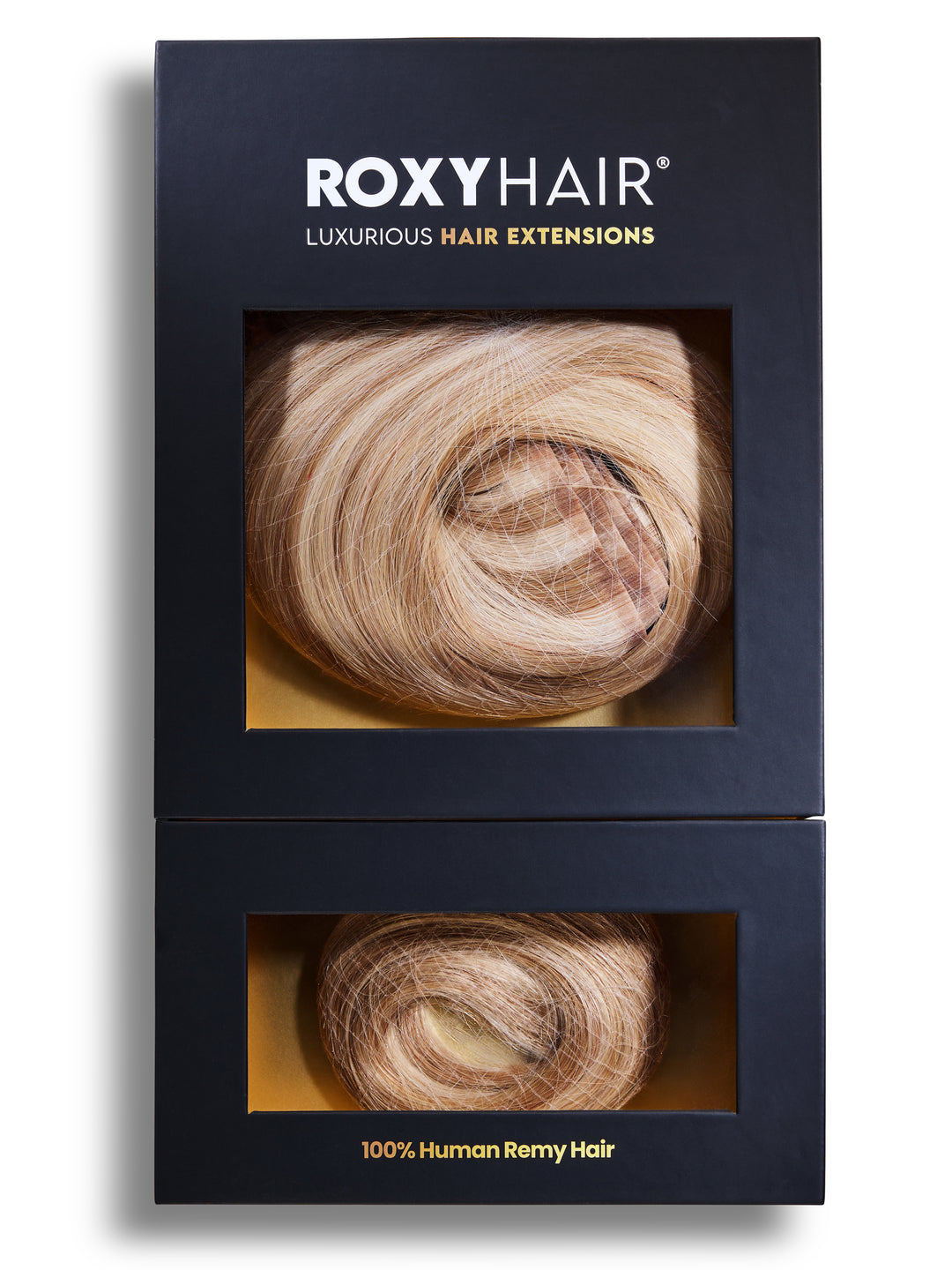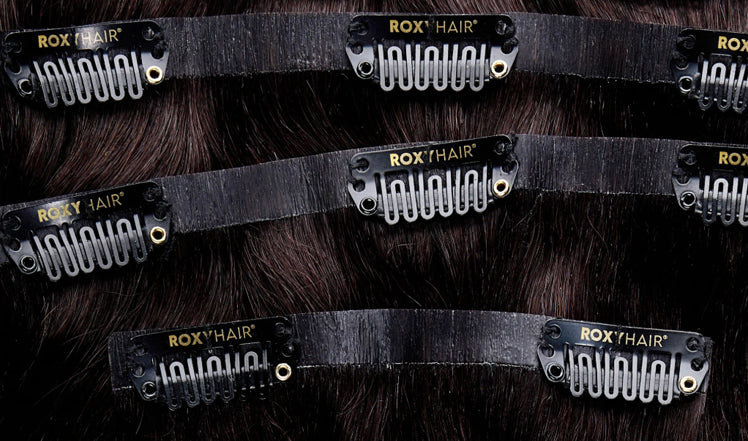Does the thought of cleaning those extra tresses make you nervous? Don't worry. Washing clip-in hair extensions is actually pretty easy. Keeping them durable and beautiful doesn't take much effort—just gentle TLC and a little inside knowledge will save you. No more tangled, dirty extensions bringing you down!
By the end of this article, you'll be washing your clip-ins like a pro. Learn how to effectively clean and care for your extensions so they last longer, feel softer, and gives you a good hair days ahead! Let's get started!
The Importance of Washing Clip-In Hair Extensions

Clip-in hair extensions, whether made of natural human hair or synthetic fibers, require regular cleansing to remove the buildup of hair products, oils, dirt, and other contaminants to prevent them from being dull and tangled. It also needs cleaning just like your real hair.
But how often should you wash them? There's no single right answer. If you see a buildup, it's time wash them. Typically, washing them every 5 wears should do the trick but this depends on you and how you wear them.
As we know, washing your clip-in hair extensions is super important. In the case of human hair extensions, insufficient cleansing can lead to damage and breakage of the hair cuticles over time through friction and tangling. This shortens the usable lifespan of high-quality extensions.
Frequent washing using appropriate shampoos and conditioners keeps the hair smoother and more manageable. For synthetic (artificial) extensions, buildup mainly causes aesthetic issues, but regular cleaning is still important for the best look and longevity.
Preparing Your Clip-In Hair Extensions for Washing

Thorough preparation before washing your clip-in hair extensions is necessary. There are two main steps: detangle and separate those weft sections. These prepatory steps ensure your extensions can get deep cleaned without taking damage. They take a few extra minutes, but save you trouble later!
Detangling Your Extensions
Detangling is the initial step to prepare your extensions for washing. This means gently brushing out any tough knots, mats, or tangles which then makes them easier to wash and style. Use a wide-tooth comb or a soft bristle brush, such as the Boar Bristle Brush or the Detangle Brush.
The method you use to detangle your extensions is just as important as the tools you use. Start from the bottom and carefully work your way up to the roots. This technique ensures that you remove tangles from the ends to the weft area without causing any damage to the hair.
Separating the Wefts
After detangling, separate the wefts (the tracks of hair attached to the clips). This allows the shampoo to penetrate and rinse out fully. The easiest way is to group by number of clips - 2 clip wefts together, 3 clips together etc. Clip them in place after separating to keep them apart while washing.
Having some tail combs, sectioning clips, or cutting combs on hand makes separation quicker. And be sure to gently squeeze out excess water before letting your extensions air dry.
The Washing Process: Step-by-Step Guide

Now that your clip ins are detangled and the wefts are separated out- washing time! And with washing, the key is to choose the right shampoo and conditioner and use the proper washing technique.
Choosing the Right Shampoo and Conditioner
Selecting the right shampoo and conditioner is the first step in the washing process.
You might be wondering, “Can I use the same shampoo and condition on my clip ins?” The answer is, it depends. If your shampoo and conditioner are sulfate-free, then yes. Sulfate-free products are recommended for washing hair extensions as they specially formulated to be gentle and don’t strip the natural hair oils.
Take note as well that alcohol is another red flag for washing extensions. It can make the hair dry and prone to damage over time.
So when picking a shampoo and conditioner, flip that bottle over to check whether the ingredients are sulfate-free and alcohol-free. This is what we tell all our Foxy Hair customers.
Washing Technique
After selecting the appropriate shampoo and conditioner, proceed to wash clip in hair using the following technique to properly wash hair extensions:
- Gently apply shampoo to each part of the extensions to wash the hair. Be careful that the clips stay dry.
- After shampooing, apply conditioner from root to tip.
- Place each weft on a towel.
- For best results, let the extensions air dry.
Proper rinsing is important. Use cold water rather than lukewarm water. Cold water helps wash away residue from conditioners and products that can make the hair look greasy or weigh it down when dry. This is especially important for real human hair extensions, as residue buildup can really drag the style down.
Conditioning and Nourishing Your Extensions
Washing your clip-in hair extensions is just the start- to keep your extensions looking their best, they also need to be conditioned and nourished. Using deep conditioning treatments and hair masks nourishes the hair, leaving it soft and moisturized. This maintains the quality of the extensions so they last longer.

Deep Conditioning Treatments
Using deep conditioning treatments is very important for keeping clip-in hair extensions healthy. Deep conditioners provide intense hydration that helps keep extensions smooth and easy to style.
To deep condition clip-ins, apply a deep conditioning product or smoothing conditioner to each weft of hair. Let it soak in for 5-10 minutes before rinsing. This gives the conditioner enough time to really penetrate the hair with moisture and protectants that lock in softness and shine.
It is recommended to deep condition your extensions 1-2 times per week for best results. Doing regular deep conditioning treatment infuses moisture, smooths the cuticle, and prevents damage over time.
Some deep conditioners you can use for your extensions include Shea Moisture Manuka Honey & Mafura Oil Intensive Hydration Masque.
Shop Roxy Hair
Hair Masks
Deep conditioning treatments are great, but hair masks go extra mile for hydrating your clip-in hair extensions. Using a hair hair mask 1-2 times a month gives your extensions an extra dose of:
- Deep conditioning
- Essential hydration
- Nourishment
- Protection to the hair
To use a hair mask: Apply it to your clip ins and your own hair, twisting them together. Pop on a shower cap and let the mask soak in overnight while you sleep. Rinse out in the morning to get a sleek, nourished-looking hair.
There are many hair masks that work well with clip in extensions. Some popular options are:
- Shea Moisture Manuka Honey & Mafura Oil Intensive Hydration Masque
- OUAI Fine To Medium Hair
- Moroccanoil Intense
- HOTHEADS Hydrate Deep Conditioning Masque
- Morroconoil Intense Hydrating Mask
- Love Hair Nourishing Treatment Mask
Drying and Styling Your Clip-In Hair Extensions

Once your extensions are washed, conditioned, and nourished, they’re ready for drying and styling. So what'll it be - air dry or blow dry? Both have their perks!
Air Drying vs. Blow Drying
When it comes to drying your clip-in hair extensions, you have two main options: air drying or blow drying. Both methods have their pros and cons.
Air drying is generally the recommended method. Air drying means letting your hair dry naturally, without any help of heat tools
Pros:
- Gentler on hair, less potential for heat damage
- Faster and easier, just let hair dry naturally
- Allows natural texture/volume to shine through
- Longer lasting results, keeps hair healthy
Cons:
- Can take a while to fully dry
- Harder to style the hair smoothly/sleekly
- More prone to frizz without heat styling
Blow drying on the other hand, involves a hair dryer to actively dry your extensions. If you choose to blow dry your extensions, there are some points you might want to consider.
Pros:
- Dries hair faster, good when you're in a rush
- Allows you to style and get sleekness
- More control over the finished look
Cons:
- Hot air can damage hair over time
- Requires more work with the dryer/brush
- Can cause frizz if done incorrectly
Styling Tips
Once your extensions are dry, they’re ready for styling. Now it's time for the fun part. But be gentle, we don't want any damage to those luscious locks or product build up.
First rule: always use a cool setting to avoid overheating the hair. Heat is hair's worst enemy.
Second, apply a heat protectant spray. It creates a shield to prevent damage from styling. Always spray it on before breaking out on hot tools.
For big, beautiful curls, gently back-comb the sections where the extensions will attach and use a little texture spray before curling. This helps to cushion the hair and prevent heat damage.
If you're going for a sleek and straight luxy hair, take it slow with the flat iron on a flat surface. Start from top to bottom through the extensions. Keep repeating until you get that smooth look you love.
Don’t forget to use hydrating and nourishing products. Oils like coconut, Argan, and castor oil provide moisture. Leave-in conditioners or Argan oil is also good for added nourishment and preventing future damage.
Caring for Your Extensions Between Washes
Caring for your extensions doesn't stop after washing, conditioning, drying, and styling. You need to maintain them between washes, too.
The key steps for extension care between washes are using dry shampoo and proper storage.
Dry Shampoo
Dry shampoo is like a miracle in a bottle for your extensions. Apply it when your hair is looking limp and greasy between washes. Dry shampoo soaks up all the icky oil and sweat to refresh your style.
- If you got clip-ins, make sure to spray the shampoo right onto the wefts or braids- not your scalp! No need to go overboard either. Start with short little sprays between tracks.
- Then, simply massage it in gently with your fingers to really work the powder through. This removes grease and brings your volume back to life!
- Brush out any leftover residue. This distributes the dry shampoo evenly so you have manageably soft, freshly-washed looking extensions.
Proper Storage
Proper storage keeps clip-in extensions looking their best. With proper storage between wears, it will rem smooth, shiny, and ready to use each time. Here’s how to do it:
- First, gently brush out any tangles so the hair is smooth.
- Next, organize the aligned wefts neatly together on one side.
- Then, carefully roll up the wefts to maintain the shape.
- Store them somewhere dry and cool, away from direct sunlight or heat. Original packaging, a box, or hung up works well.
The key is keeping the hair detangled, orderly, and protected. This prevents damage and preserves the quality of the clips and hair.
Summary
In conclusion, taking care of your clip-in hair extensions involves several key steps. Use gentle shampoos and conditioners, nourish with masks and oils, and dry/style carefully with heat protection. Refresh with dry shampoo between washes and store properly to prevent tangling. Following this comprehensive haircare routine will help keep your extensions looking beautiful, healthy, and long-lasting.
Now, if you're ready, shop at Foxy Hair to get your own set of clip in hair extensions or ponytails and achieve the gorgeous you!
Frequently Asked Questions
Can clip in extensions get wet?
No, it is not recommended to get clip-in extensions wet, especially while swimming or taking a shower. It's best to avoid getting them wet to maintain their quality.
How long do clip-in hair extensions last?
With proper care, clip-in hair extensions can last for three to six months and even longer, especially if you avoid frequent wear and take steps to prevent damage.
How do you take care of clip in extensions?
To take care of clip-in extensions, start by gently brushing the hair from the ends and working your way up to untangle. Use a gentle, clarifying shampoo, apply it carefully to the extensions, and rinse thoroughly with cold water.
What type of shampoo and conditioner should I use for my extensions?
You should use sulfate-free and alcohol-free shampoos and conditioners for your extensions to prevent dryness and maintain their natural oils.
How should I store my clip-in hair extensions?
You should store your clip-in hair extensions in their original packaging, a small box or resealable plastic bag, or an airtight container such as a shoe box to keep them dry and prevent mildew and mold growth.
Key Takeaways
- You should wash your hair clip-in hair extensions regularly. Washing removes things like hair products, sweat, and dirt. This will keep your extensions looking fresh, clean, and make it easier to style.
- Before washing, always de-tangle gently with a wide-tooth comb, start at the bottom tips and work up. Separate the wefted sections too. This preps the extensions so you can really get them clean without causing extra damage.
- When it's time to wash, use sulfate-free, alcohol-free shampoo and conditioner. To keep the hair healthy, throw in some deep conditioning treatments or hair masks too. Then let them air dry to maintain the quality and health of the hair extensions.




